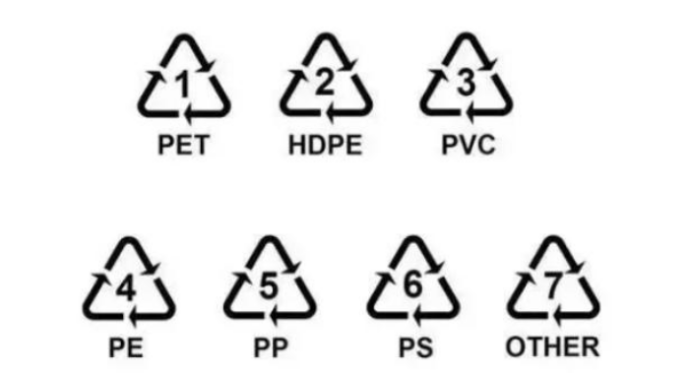This is an international plastic classification. Different numbers indicate different materials. The triangle surrounded by three arrows indicates that food-grade plastic is used. The “5″ in the triangle and the “PP” below the triangle indicate the plastic. The product is made of polypropylene (PP) material. The material is safe and non-toxic. Most importantly, it has excellent high temperature resistance and stable performance. It is a plastic material that can be placed in a microwave oven
There are 7 types of marking codes for plastic products. Among the 7 types, there is only No. 5, which is the only one that can be heated in a microwave oven. And for microwave special glass bowls with lids and ceramic bowls with lids, the logo of polypropylene material PP must also be marked.

The numbers range from 1 to 7, representing different types of plastics, and our common mineral water, fruit juice, carbonated soda and other room temperature beverage bottles use “1″, that is PET, which has good plasticity, high transparency, and poor heat resistance. It is easy to deform and release harmful substances when it exceeds 70°C.
“No. 2″ HDPE is often used in toiletries bottles, which is easy to breed bacteria and is not suitable for long-term use.
“3″ is the most common PVC, with a maximum temperature resistance of 81°C.
“No. 4″ LDPE is often used in plastic wrap, and its heat resistance is not strong. It often melts at 110°C, so the film must be removed when heating food.
The PP material of “5″ is food-grade plastic, the reason is that it can be molded directly without adding any harmful additives, and can withstand high temperatures of 140°C. It is specially used for microwave ovens. Many baby bottles and heatable lunch boxes are made of this material.
It should be noted that for some microwave lunch boxes, the box body is made of No. 5 PP, but the box cover is made of No. 1 PE or PS (general product instructions will state it), so it cannot be put into the microwave oven together with the box body.
“6″ PS is the main raw material for foaming disposable tableware. It is not suitable for strong acid and alkali, and cannot be heated in a microwave oven.
The “7″ plastic includes other plastics other than 1-6.
For example, some people like to use very hard sports water bottles. In the past, they were mostly made of plastic PC. What has been criticized is that it contains the auxiliary agent bisphenol A, which is an endocrine disruptor and is easily released above 100°C. Some well-known brands have adopted new types of other plastics to make water cups, and everyone should pay attention to them.
Boiling foods vacuum pouch microwave food bag for frozen pack high temperature RTE Food pouch usually made of PET/RCPP or PET /PA/RCPP
Unlike other typical plastic lamianted pouches, the Microwavable Pouch is incorporated with a unique Polyester Film coated with Alumina (AIOx) as its protective layer instead of the standard aluminium layer. Enables the pouch to be heated as a whole in the microwave while preventing electrical sparks from occurring. Featuring a unique self-venting capability, the Microwavable Pouch brings convenience to its users during food preparation by eliminating the need to leave any openings in the pouch when heating the food in the microwave.
Stand up pouches allowing customers to consume their food directly no need to wash bowls or plates. The Microwavable Pouch is safe for custom graphic printing, allowing companies to show their brand and product information.
Please be free to send inquiry. We will provide details for your reference.
Post time: Dec-13-2022




